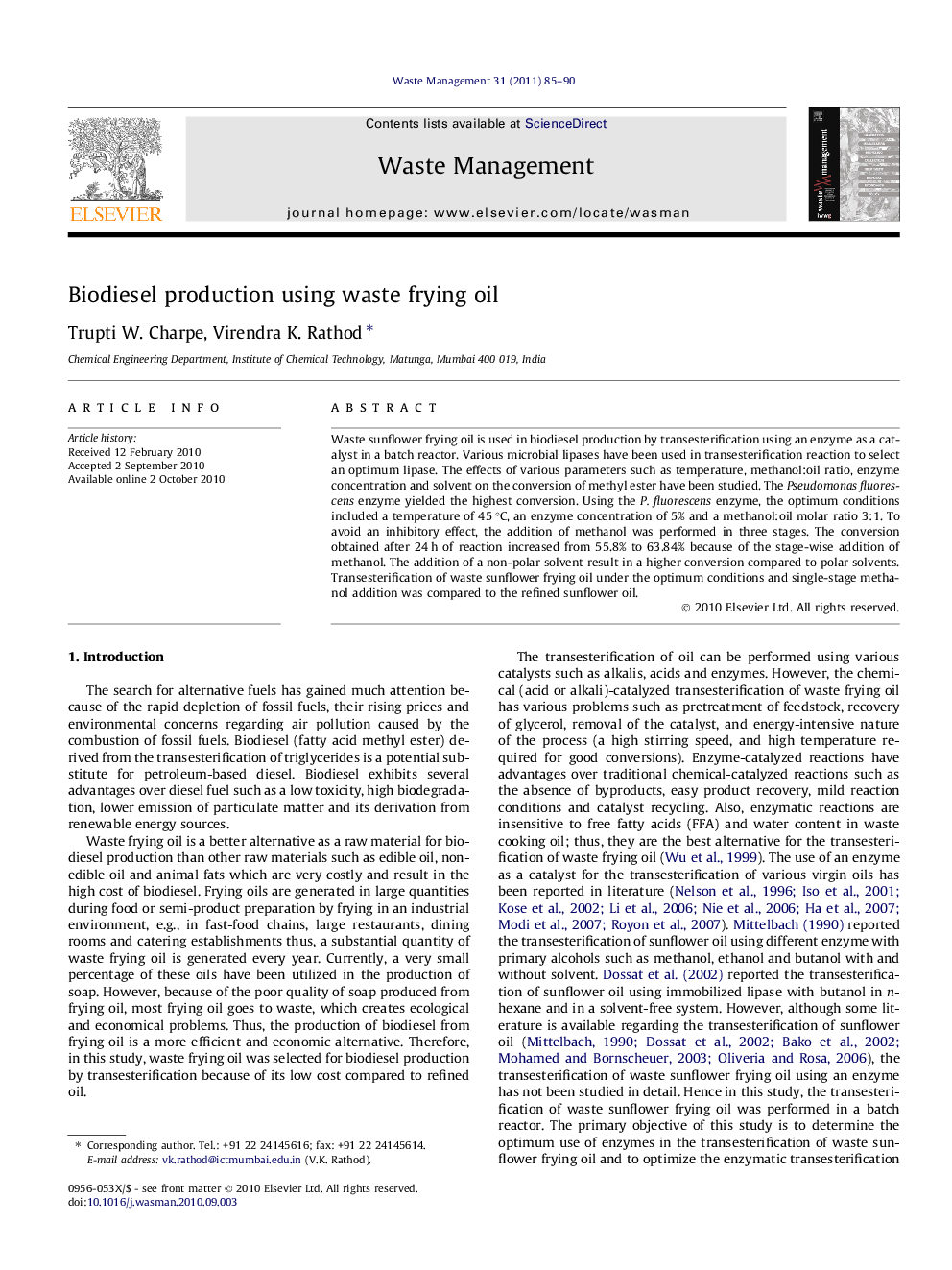| کد مقاله | کد نشریه | سال انتشار | مقاله انگلیسی | نسخه تمام متن |
|---|---|---|---|---|
| 4472107 | 1315057 | 2011 | 6 صفحه PDF | دانلود رایگان |

Waste sunflower frying oil is used in biodiesel production by transesterification using an enzyme as a catalyst in a batch reactor. Various microbial lipases have been used in transesterification reaction to select an optimum lipase. The effects of various parameters such as temperature, methanol:oil ratio, enzyme concentration and solvent on the conversion of methyl ester have been studied. The Pseudomonas fluorescens enzyme yielded the highest conversion. Using the P. fluorescens enzyme, the optimum conditions included a temperature of 45 °C, an enzyme concentration of 5% and a methanol:oil molar ratio 3:1. To avoid an inhibitory effect, the addition of methanol was performed in three stages. The conversion obtained after 24 h of reaction increased from 55.8% to 63.84% because of the stage-wise addition of methanol. The addition of a non-polar solvent result in a higher conversion compared to polar solvents. Transesterification of waste sunflower frying oil under the optimum conditions and single-stage methanol addition was compared to the refined sunflower oil.
Research highlights
► Waste sunflower frying oil is successfully converted to biodiesel using lipase as catalyst.
► Various process parameters that affects the conversion of transesterification reaction such as temperature, enzyme concentration, methanol: oil ratio and solvent are optimized.
► Inhibitory effect of methanol on lipase is reduced by adding methanol in three stages.
► Polar solvents like n-hexane and n-heptane increases the conversion of tranesterification reaction.
Journal: Waste Management - Volume 31, Issue 1, January 2011, Pages 85–90